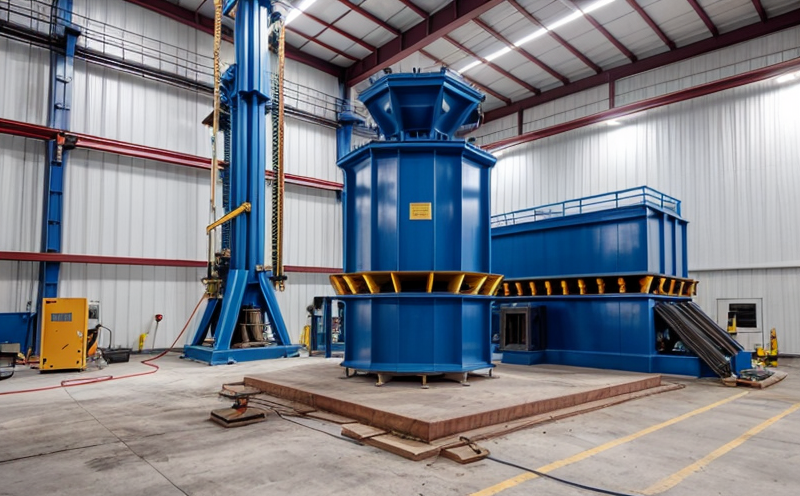ASTM E1895 Modal Analysis of Structural Systems
The ASTM E1895 standard provides a comprehensive framework for conducting modal analysis on structural systems, which is critical for ensuring the reliability and safety of various engineering applications. This method allows engineers to determine the natural frequencies, mode shapes, and damping ratios of structures under dynamic loading conditions, thereby identifying potential sources of vibration or failure.
Modal analysis involves exciting a structure with controlled inputs and measuring its responses using accelerometers placed at strategic locations. The resulting data is then processed through advanced signal processing techniques to extract modal parameters that describe the structural behavior accurately. This service ensures compliance with international standards such as ASTM E1895, ISO 10846, and ASME PTC 19.3.
Understanding the modal characteristics of a structure is essential for several reasons:
- To assess structural integrity under operational conditions,
- To predict fatigue life,
- To enhance design optimization,
- To improve manufacturing processes.
The ASTM E1895 modal analysis service is particularly valuable in sectors like aerospace, automotive, and civil engineering where structural integrity and safety are paramount. By leveraging this technique, manufacturers can ensure that their products meet stringent performance requirements while minimizing risk during operation.
International Acceptance and Recognition
The ASTM E1895 modal analysis standard is widely recognized across the globe for its robust methodology. This service has been adopted by numerous industries, including aerospace, automotive, and construction, due to its reliability in providing accurate modal parameter estimation.
Many leading organizations worldwide rely on this service because it guarantees consistent results regardless of where the tests are conducted. Compliance with ASTM E1895 ensures that structures undergo rigorous evaluation against internationally accepted criteria, enhancing confidence in product quality and performance. This global acceptance also facilitates seamless international collaboration and trade.
For instance, aerospace manufacturers use this service to ensure their aircraft components meet stringent vibration standards specified by regulatory bodies like the Federal Aviation Administration (FAA) or European Union Aviation Safety Agency (EASA). Similarly, automotive companies apply ASTM E1895 during the development phase to identify any potential issues early in the design process.
Competitive Advantage and Market Impact
- Enhances product reliability by identifying inherent structural weaknesses,
- Promotes faster time-to-market through efficient problem-solving,
- Supports sustainable design practices that reduce material usage,
- Facilitates regulatory compliance, reducing the risk of non-conformance penalties.
By integrating ASTM E1895 modal analysis into their quality assurance processes, companies can gain significant competitive advantages. These include reduced development costs due to fewer iterations and lower production costs resulting from optimized designs. Furthermore, adherence to international standards like ASTM E1895 enhances brand reputation and customer trust.
Market leaders in sectors such as aerospace and automotive have already embraced this service to stay ahead of competitors who may not yet be fully utilizing these advanced testing techniques. As a result, they enjoy higher market shares and stronger customer relationships built on reliability and safety assurances.
Use Cases and Application Examples
| Industry Sector | Specific Use Case | Outcome |
|---|---|---|
| Aerospace | Testing aircraft components for vibration resistance during flight. | Ensures compliance with FAA regulations and improves overall safety. |
| Automotive | Evaluating vehicle chassis for dynamic stability before mass production. | Achieves better fuel efficiency and enhanced driving experience. |
| Civil Engineering | Assessing bridge structures for long-term durability under varying environmental conditions. | Reduces maintenance costs and extends service life significantly. |
The ASTM E1895 modal analysis is applicable beyond just these sectors. It can be used in any industry where structural integrity plays a crucial role, such as manufacturing, construction, or even renewable energy installations.





